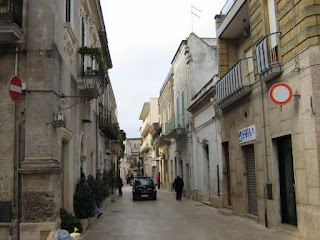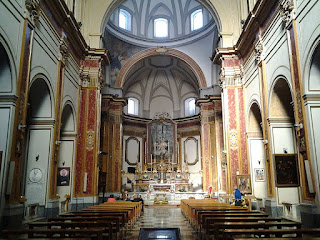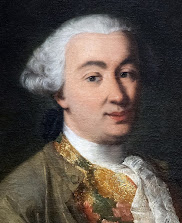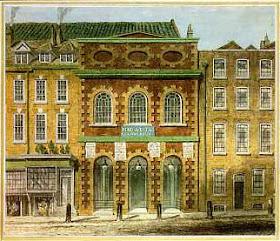Masterpiece widely acknowledged only after tragic death
 |
| Antonio Sacchini, the son of a cook from Florence, who learned music in Naples |
His 1785 work Oedipe à Colone, which fell into the opera seria genre as opposed to the more light-hearted opera buffa, in which he also specialised, has best stood the test of time among his works, although it did not achieve popularity until after his death after initially falling victim to the political climate in the French court.
Sacchini came from humble stock. His father, Gaetano, was thought to be a cook, and it was through his work that the family moved to Naples when he was four, Gaetano having been employed by the future Bourbon King of Naples, Don Carlos, then the Duke of Parma and Piacenza.
This provided the opportunity for Sacchini to receive tuition at the Conservatorio di Santa Maria di Loreto, under the supervision of the composer Francesco Durante, where he learned the basics of composition, harmony and counterpoint, also developing impressive skills as a violinist and studying singing.
After Durante’s death in 1755, Sacchini began writing operas, which were performed by the students at the conservatory to great acclaim, leading to commissions from small theatres in Naples and ultimately the prestigious Teatro di San Carlo, where his first opera seria, Andromaca, was premiered in 1761.
 |
| The title page of the libretto for Sacchini's L'olimpiade in 1763 |
More success followed. His comic operas for the Teatro Valle expanded his reputation, although in 1768, rather than continue his self-employment, he accepted a permanent post as director of the Conservatorio dell’Ospedaletto in Venice, a famous institution. There, he continued to compose operas and wrote sacred music both for the conservatory and various Venetian churches, while also acquiring a high reputation as a singing teacher. Among his pupils was Nancy Storace, the soprano for whom Mozart would later create the role of Susanna in Le nozze di Figaro.
With the encouragement of Charles Burney, the English music historian, composer and critic, Sacchini moved to London in 1772, taking with him Giuseppe Millico, one of the finest castrati then active on the European stage . In London, where he was based for the next nine years, he enjoyed some of his greatest triumphs and found great favour with British audiences. Burney felt he was the foremost composer of the decade.
However, though he was well paid, his lifestyle meant that he kept little of what he earned. As his debts escalated, he made enemies and his departure for Paris in 1781 was both to escape debtors’ prison and evade the attention among others of Venanzio Rauzzini, a leading male singer on the London circuit, who claimed that Sacchini had appropriated a number of arias of his composition and claimed them as his own.
As it happened, Sacchini’s arrival in Paris coincided with the visit of Austrian emperor Joseph II, who was familiar with Sacchini’s works and recommended Sacchini to his sister, Queen Marie Antoinette, for patronage.
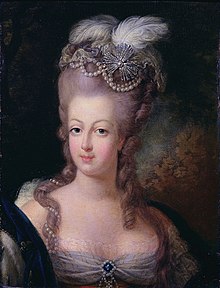 |
| French Queen Marie Antoinette was an admirer of Sacchini's work |
Marie Antoinette was known for her liking for foreign composers and handed Sacchini a lucrative contract with the Académie Royale de Musique, otherwise known as the Paris Opéra, to produce three new works.
This was not well received by the head of the Académie Royale, Denis-Pierre-Jean Papillon de la Ferté, who was opposed to the queen's predilection for foreign music and plotted to delay the premiere of Sacchini’s first French opera, Renaud.
Sacchini also found himself caught up in the rivalry between supporters of the German opera composer Christoph Willibald Gluck and those of his Italian counterpart Niccolò Piccinni, one group seeking to undermine Sacchini's work, the other supporting it, but both inclined to change their view if they thought it might disadvantage the other side.
Marie Antoinette continued to support Sacchini until, under heavy pressure, she broke a promise to make his new French opera Oedipe à Colone (Oedipus at Colonus) the first opera to be performed at the new court theatre in Fontainebleau in 1786, explaining that she had effectively been forced to give that honour instead to a French composer.
Sacchini returned to his home in Paris, distraught. Already sick with gout, he took to his bed, refused to eat, and within three days he was dead, at the age of 56.
Oedipe à Colone is generally acknowledged as Sacchini’s masterpiece, remained in the repertoire of the Paris Opéra through the mid-19th century, enjoyed various revivals in the 20th century and as recently as 2005 was staged by the American company Opera Lafayette.
Travel tip:
A 17th century painting of the bustling Piazza del Mercato
in Naples illustrates how the area of the conservatory looked
The Conservatorio di Santa Maria di Loreto, where Sacchini was a student and later a teacher, was the oldest of the four Naples conservatories that were eventually absorbed into the Conservatory of San Pietro a Majella. It was the fulcrum of the Neapolitan musical school between the 17th and 18th centuries. Built in 1537 during the Spanish expansion of Naples under the viceroy, don Pedro de Toledo, it stood between the present Piazza del Mercato and the Castello di Carmine, close to the main port area of the city. Like the other conservatories, it began life as an orphanage, where orphaned children were not only given food and accommodation but also an education. Music, initially, was one of a number of subjects taught but eventually took prominence as the conservatories became the founders of the Neapolitan school of music between the end of the 17th century and the beginning of the 18th. As a borgo - district - Santa Maria di Loreto ultimately ceased to exist after it was completely destroyed by bombing during the Second World War. The monastery that formed part of the original site was turned into a hospital but was flattened during an air raid in December, 1942.
Travel tip:
Teatro di San Carlo in Naples, which first staged an opera by Sacchini in 1761, can be found in Via San Carlo close to Piazza del Plebiscito, the main square in Naples. The theatre was designed by Giovanni Antonio Medrano for the Bourbon King of Naples, Charles I, and opened in 1737, some 41 years before Teatro alla Scala in Milan and 55 years before La Fenice in Venice. San Carlo is now believed to be one of the oldest, if not the oldest, functioning opera houses in the world. Both Gaetano Donizetti and Gioachino Rossini served as artistic directors at San Carlo and the world premieres of Donizetti’s Lucia di Lammermoor and Rossini’s Mosè were performed there.
Also on this day:
1497: The unsolved murder of Giovanni Borgia, brother of Cesare and Lucrezia
1837: The death of poet and philosopher Giacomo Leopardi
1968: The death of Salvatore Quasimodo, Nobel Prize-winning poet
.jpg)
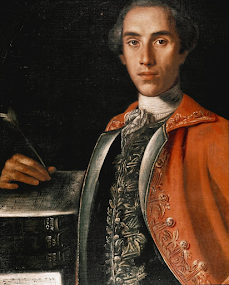
.png)
